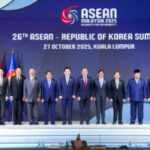
Multinational enterprise (MNE) groups almost always require a wide range of services to support their operations – encompassing administrative, technical, financial and commercial needs. These services often involve management, coordination, and control activities that cross boundaries and business units. And just as an independent enterprise may choose to perform a service in-house or outsource it to a specialist, an MNE member may obtain services externally or from competent affiliated enterprises within the group.
The decision, whether to source services internally or externally, raises deeper questions beyond cost and convenience. Are these services actually adding value within the related-party arrangement, and do genuine inter-group transactions exist in the first place? Or are fees being charged for services that provide no benefits? Answering these questions requires more than operational considerations; It demands strict compliance with transfer pricing principles to ensure that intercompany transactions are conducted at arm's length.
Fortunately, the Bureau of Internal Revenue (BIR), through Revenue Audit Memorandum Order (RAMO) No. 1-2019, and the Organization for Economic Co-operation and Development (OECD), through its Transfer Pricing Guidelines, provide a framework to help businesses draw the line on what constitutes a valid intra-group transaction.
In this edition of Let's Talk TP, we discuss how to determine whether an intra-group service is chargeable, what activities fall outside the scope of chargeable services, and why the “benefit test” and proper documentation are important to align business practices with regulatory expectations.
What are inter-group services?
Under the Philippine transfer pricing rules outlined in RAMO No. 1-2019, intra-group services are defined as activities supplied by a party within a business group that provide benefits for one or more other members in the business group. These services may take the form of management services, administration services, technical services, support services, purchasing services, marketing services, distribution services and other commercial services provided in connection with the nature of the group's business.
Similarly, the OECD Guidelines state that in accordance with the arm's length principle, the question of whether an intra-group service has been provided should depend on whether the activity provides economic or commercial value to the relevant group member to enhance or maintain its business position.
What is 'benefit testing'?
The “benefit test” is a key principle under the transfer pricing guidelines to determine whether an inter-group service should be charged. It considers whether the service provided provides economic benefits or commercial value that improves the commercial position of the company receiving it, such as increasing profits or increasing efficiency by reducing operating costs. The process and results of the provision of services must be supported with documentation and evidence.
Another simple but important question is – would an independent enterprise, in comparable circumstances, be willing to pay for the service if it were performed by an unaffiliated party?
If the answer is yes, the service probably provides economic or commercial value and qualifies as an intra-group service. If the answer is no, the activity may be considered non-chargeable.
Applying this test in practice requires more than a theoretical question; This demands a careful look at the nature of the service, the economic benefits it provides and whether the recipient would actually seek it from an external provider. For example, imagine a parent company that develops a sophisticated cybersecurity system and deploys it across all subsidiaries. This service strengthens operational flexibility, minimizes risks, and ensures compliance with data protection laws – services that independent service providers are capable of and benefits for which an independent enterprise will almost certainly pay.
While profit testing sounds simple, it can be challenging to implement in practice. This requires not only asking whether an independent enterprise will pay for the service, but also demonstrating that the benefit is real, measurable, and documented.
Activities not considered inter-group services
RAMO No. 1-2019 also defines activities that are not considered intra-group services; Therefore, no service charge can be charged:
One. shareholder activity
It refers to activities that are undertaken by one member of an MNE group (usually a parent company or regional holding company) solely because of its ownership interest in other members of the group. These activities are undertaken to satisfy the parent's own obligations and do not directly benefit the subsidiaries.
Examples of these include costs related to preparing consolidated financial statements and the parent company's compliance with relevant tax laws. The costs associated with this type of activity should be borne by the shareholder and not recharged to subsidiaries that do not directly benefit from it.
B. Duplicate Services
Duplicate services occur when a member of the MNE group performs activities that repeat actions already performed by the taxpayer or a third party.
An example of this is if a subsidiary company has its own human resources (HR) team that manages payroll and recruiting, but its parent company still charges it for the same services. Since the subsidiary already performs this function internally, the additional fee represents duplication and fails the arm's length test.
C. windfall profitFIts
These primarily refer to activities undertaken by a member of an MNE group to meet the needs of a specific group entity, which incidentally benefits other members. These windfall profits arise without deliberate intention or direct provision of services to other entities. Under transfer pricing rules, the costs associated with such incidental benefits cannot be charged to the benefiting entity because, at arm's length, an independent enterprise would not agree to pay for a service that it has not specifically requested or needed.
Consider a group with a centralized IT function. Company A installs a new computerized system to handle orders for Company B, an affiliate that sells products to third parties, and Company C (another affiliate). The new system improves Company B's efficiency, which indirectly enables Company C to reduce overhead costs by shrinking its purchasing department. Although Company C benefits from the improved system, the service was for Company B. Therefore, Company C should not bear any part of the cost to implement the system, because the benefit was incidental and not the result of service directed to it.
D. passive association
This refers to situations where the taxpayer benefits from affiliation with the group, such as enjoying a strong reputation or a high credit rating, but does not receive any specific services from the parent or related entity.
Take a well-known multinational group with a strong global reputation and financial position. This gives a subsidiary the advantage of having a higher credit rating and easier access to financing. Although this benefit is real, it is contingent on group affiliation and not the result of a service provided. Therefore, no service charge should be charged.
E. On-call services
On-call services are arrangements where one member of the group, often the parent company, makes certain resources or personnel available to other entities at any time, whether or not the service is actually used. Unless an independent party will pay a premium for guaranteed availability, these additional costs should not be allocated to group members.
An example of this is if the parent company keeps a legal team on standby for all subsidiaries but does not provide any legal advice during the year. Charging subsidiaries for this availability is unfair as no actual service was provided, and the cost would not be borne under the limited conditions.
key takeaways
The BIR has the power to redistribute or reallocate income and expenses among related parties (whether local or foreign) if it determines that such adjustments are necessary to reflect the true income of a business. This underlines the importance of identifying potential intra-group transactions and ensuring that they are priced at a significant distance from each other.
Accordingly, while inter-group services are common in multinational arrangements, they should not be charged without careful consideration. Think of it this way: In real life, you wouldn't pay for a service you didn't request or that doesn't benefit you, right? Conversely, you will not work for free or even without compensation, especially if it takes time, effort, and resources. The same logic applies to transfer pricing.
Tax authorities expect companies to demonstrate that intercompany services provide real value and are reasonably priced. But even a solid analysis is not sufficient without proper supporting records. Therefore, it is prudent for taxpayers to prepare detailed transfer pricing documentation that characterizes the nature of the intercompany transaction, confirms the value provided, and supports the pricing methodology applied. It serves not only as a compliance tool, but also as a safeguard in the event of tax audits or disputes, helping to confirm the integrity of a company's transfer pricing practices.
So, the next time your company provides intra-group services, stop and reflect: What real value is being provided? Will someone outside the group pay for it? Because in transfer pricing, it is not just about doing the work, but about proving its usefulness. To charge or not to charge? that is the question.
Let's Talk TP is a branch of Let's Talk Tax, a weekly newsletter from P&A Grant Thornton which aims to keep the public informed about various developments in taxation. This article is not intended to be a substitute for competent professional advice.
Patrick Manuel R. Olarte is the Manager of the Tax Advisory and Compliance Division of P&A Grant Thornton, the Philippine member firm of Grant Thornton International Limited.
pagrantthornton@ph.gt.com










